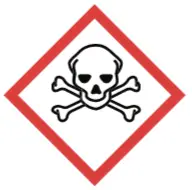Written by J.A Dobado | Last Updated on April 22, 2024
Objective
To produce a macrocycle, in this case a derivative of calix[4]pyrrole as an example of a sequestering agent anion.
![Preparation of calix[4]pyrrole](https://www.chemistry-online.com/wp-content/uploads/2022/11/sch-calix4pyrrole.png)
Background
Agents that selectively bind anions have attracted interest because of their role in biological and ecological processes. Two strategies have been designed to produce such compounds. The first involves the inclusion in the molecule of cationic groups that electrostatically interact with the anion.
![Preparation of calix[4]pyrrole](https://www.chemistry-online.com/wp-content/uploads/2022/11/sch-calix4pyrrole-intro.png)
The second strategy is to introduce compounds capable of forming hydrogen bonds with certain anions. Porphyrins and other heterocyclic related macrocycles play key roles in many biological processes. The porphyrinogens, also known as calix[4]pyrroles, are excellent chelating agents. The calix[4]pyrroles resulting from the condensation of pyrrole with aldehydes are compounds capable of easy oxidation. This is not true of the resulting condensation with ketones, which are very stable. This condensation is catalyzed by acid. An example is the meso-octamethylporphyrinogenic also known as “acetonepyrrole” described by Baeyer in 1886.
Procedure
In a 10 ml Erlenmeyer provided with a stir bar, mix 5 ml of acetone and 1 ml pyrrole. Cover the flask with a septum and cool the mixture in an ice bath with magnetic stirring. Add dropwise to the reaction crude 0.5 ml of HCl using a syringe fitted with a needle piercing the septum. The solution, initially colorless, turns brown and shows slight effervescence. After some time, a white solid begins to precipitate. Stir for another 5 min and isolate the white solid by vacuum filtration using a Hirsch funnel, and then wash with cold acetone (15–20 ml) (can be dried at 40 ºC for 30 min). Recrystallize the product of the reaction using approximately 5 ml of acetone per 100 mg product. If after 30 min the solid has not begun to crystallize, add water dropwise until turbidity appears (estimated yield 70%). Check the purity of the product by TLC using the eluent, hexane/ethyl acetate (7:3).
Physico-chemical properties
This table collects data for the molecular weight (Mw), melting point (M.p.) boiling point (B.p.) and density of the reactives and compounds used in this laboratory experiment.
| Name | Mw (g/mol) | M.p. (ºC) | B.p. (ºC) | Density (g/ml) |
| Ethyl acetate | 88.11 | -84 | 77.1 | 0.902 |
| Acetone | 58.08 | -94 | 56 | 0.791 |
| 1H-Pyrrole | 67.09 | -23 | 131 | 0.967 |
| Hexane | 86.18 | -95 | 69 | 0.659 |
| meso-Octamethylcalix[4]pyrrole | 428.61 | - | - | - |
| HCl | 36.46 | -30 | >100 | 1.200 |
GHS pictograms
Hazard pictograms form part of the international Globally Harmonized System of Classification and Labelling of Chemicals (GHS) and are collected in the followinf Table for the chemical compounds used in this experiment.
| Name | GHS |
| Ethyl acetate |   |
| Acetone |   |
| 1H-Pyrrole |    |
| Hexane |     |
| meso-Octamethylcalix[4]pyrrole |  |
| HCl |   |
International Chemical Identifier
The IUPAC InChI key identifiers for the main compounds used in this experiment are provided to facilitate the nomenclature and formulation of chemical compounds and the search for information on the Internet for these compounds.
| Ethyl acetate | XEKOWRVHYACXOJ-UHFFFAOYSA-N |
| Acetone | CSCPPACGZOOCGX-UHFFFAOYSA-N |
| 1H-Pyrrole | KAESVJOAVNADME-UHFFFAOYSA-N |
| Hexane | VLKZOEOYAKHREP-UHFFFAOYSA-N |
| meso-Octamethylcalix[4]pyrrole | XZCHDFOYWDLFEY-UHFFFAOYSA-N |
| HCl | VEXZGXHMUGYJMC-UHFFFAOYSA-N |
References
- Isac-García, J.; Dobado, J. A.; Calvo-Flores, F. G.; and Martínez-García, H. (2015). Experimental Organic Chemistry Laboratory Manual. Elsevier Science & Technology. ISBN: 978-0-12-803893-2
- A. Baeyer, Ueber ein condensationsproduct von pyrrol mit aceton, [On a condensation product of pyrrole with acetone] Berichte der Deutschen Chemischen Gesellschaft 19 (1886), no. 2, 2184–2185, DOI: 10.1002/cber.188601902121
- J. A. Shriver and S. G. Westphal, Calix[4]pyrrole: synthesis and anion-binding properties. an organic chemistry laboratory experiment, Journal of Chemical Education 83 (2006), no. 9, 1330, DOI: 10.1021/ed083p1330